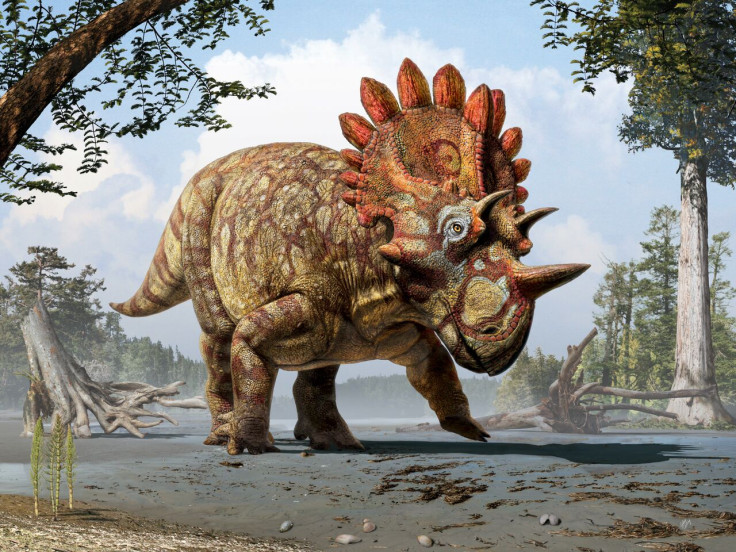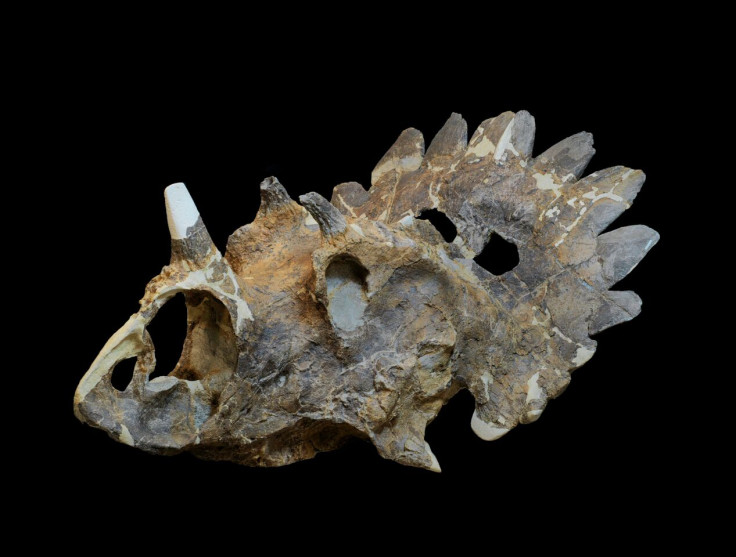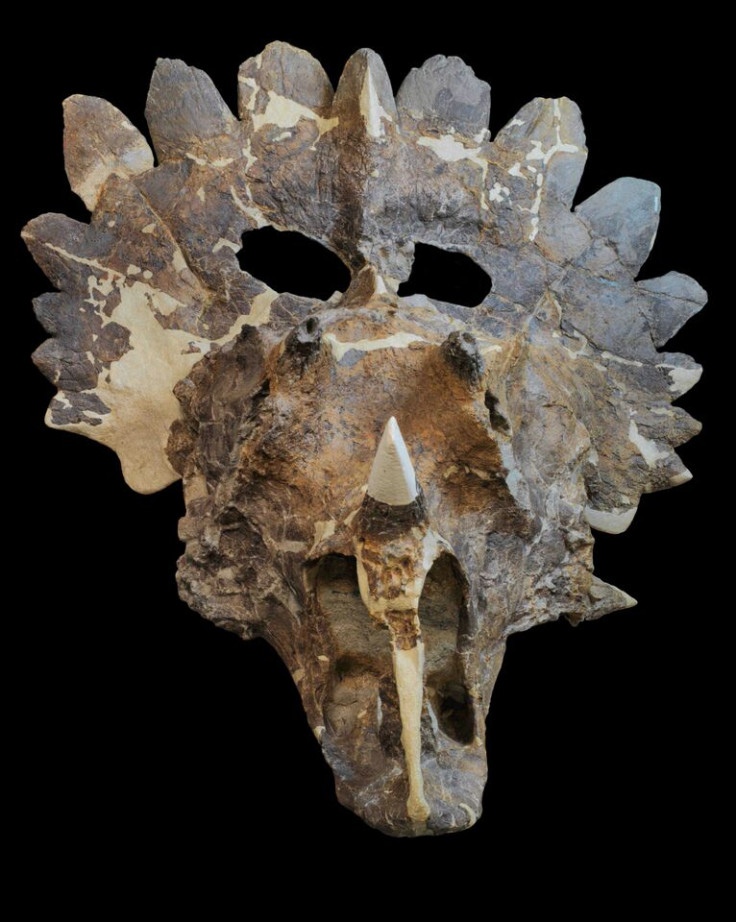Regaliceratops peterhewsi: Triceratops' 'bizarre Hellboy' cousin discovered in Canada

A "bizarre" new species of horned dinosaur nicknamed Hellboy has been discovered in Canada with "almost comically small" horns over its eyes.
Regaliceratops peterhewsi is a close relative of Triceratops and was stumbled upon by Peter Hews about a decade ago – where the dinosaur got its name from. Hews found the bones sticking out of a cliff along the Oldman River in southeastern Alberta.
The species has now been described in the journal Current Biology by scientists from the Royal Tyrrell Museum of Palaeontology in Alberta.

They found an almost completely intact skull of Hellboy and study author Caleb Brown said they could tell it was a new species immediately – just how strange it was, however, only became apparent later.
"From the onset we knew it was important," he said. "However, it was not until the specimen was being slowly prepared from the rocks in the laboratory that the full anatomy was uncovered, and the bizarre suite of characters revealed.

"Once it was prepared it was obviously a new species, and an unexpected one at that. Many horned-dinosaur researchers who visited the museum did a double take when they first saw it in the laboratory."
The size and shape of the species facial horns and frill at the back of the skull made it distinctive from other horned dinosaurs. Its nose horn was also taller than others and the two horns over its eyes were very small, while its frill was like a halo of pentagonal plates jutting outwards with a central spike: "The combined result looks like a crown," Brown said.

Researchers say the unique horned ornamentation have important implications for the evolution of the group – most horned dinosaurs fall into one of two groups; Chasmosaurines, which has a small horn on its nose and a long frill, or Centrosaurines, which has a large horn and a short frill.
Brown explained: "This new species is a Chasmosaurine, but it has ornamentation more similar to Centrosaurines. It also comes from a time period following the extinction of the Centrosaurines."
Regaliceratops peterhewsi is the first species showing evolutionary convergence and suggests there are probably far more horned dinosaurs out there waiting to be discovered.
Embargo 5pm
© Copyright IBTimes 2024. All rights reserved.






